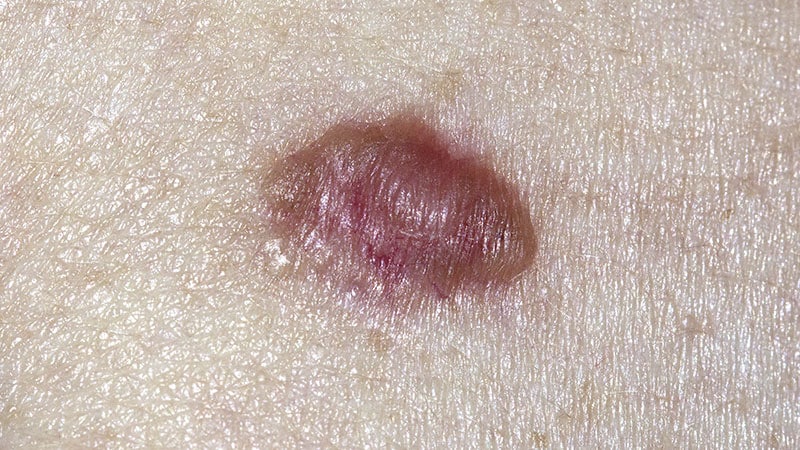Early Data on Controlled Hyperthermia for Treating BCC
Core Concepts
Heat-induced apoptosis shows promise in treating BCC.
Abstract
The study explores the efficacy of controlled hyperthermia in treating superficial and nodular basal cell cancers (BCCs). Here are the key highlights and insights:
Dr. Zachary and colleagues developed a noninvasive technique, CHAMP, for BCC treatment.
The study involved 73 patients with superficial and nodular BCCs, scanned with VivoSight Dx OCT.
Treatment methods included the Sciton 1,064-nm Er:YAG laser with different pulse durations.
Results showed high histological clearance rates with the CHAMP method.
Pretreatment OCT mapping revealed tumor extension beyond clinical margins in some cases.
Increased vascularity post-treatment suggested apoptosis as the primary mechanism of tumor response.
The 'Low and Slow' approach with controlled hyperthermia showed promising results.
Optimal parameters for treatment are still under investigation.
Dr. Avram expressed optimism about noninvasive BCC treatment approaches becoming standard in the future.
Treating BCC: Early Data on Controlled Hyperthermia
Stats
"For 2,000 years, it's been known that heat can kill cancers."
"Patients were rescanned by OCT at 3 to 12 months for any signs of residual tumor and if positive, were retreated."
"Among the 26 patients treated with the CHAMP method, 22 (84.6%) were histologically clear."
"Currently, he and his colleagues consider 55 degrees at 60 seconds as 'the optimal parameters,' he said."
Quotes
"For 2,000 years, it's been known that heat can kill cancers."
"Hopefully, at some point, such approaches will become the standard of care for many BCCs that we are now treating surgically."
Key Insights Distilled From
by Doug Brunk at www.medscape.com 05-05-2023
http://www.medscape.com/viewarticle/991625
Deeper Inquiries
What are the potential long-term implications of adopting noninvasive treatments for BCC?
The adoption of noninvasive treatments for BCC, such as the controlled hyperthermia technique discussed in the study, could have significant long-term implications in the field of dermatology. Firstly, noninvasive treatments offer patients a less invasive alternative to traditional surgical procedures, potentially reducing scarring, discomfort, and recovery time. This could lead to increased patient satisfaction and compliance with treatment regimens. Additionally, noninvasive treatments may expand the pool of eligible patients who can receive treatment, including those who are poor surgical candidates or have comorbidities that make surgery risky.
From a healthcare system perspective, noninvasive treatments could potentially reduce the burden on surgical facilities and resources, as well as decrease overall healthcare costs associated with BCC treatment. As these noninvasive techniques continue to be refined and studied, they may eventually become the standard of care for many BCC cases, further revolutionizing the approach to skin cancer treatment.
Is there any concern about the sustainability of apoptosis as the primary mechanism of tumor response?
While apoptosis as the primary mechanism of tumor response in noninvasive BCC treatments, such as controlled hyperthermia, shows promising results in the study, there may be concerns about its sustainability over the long term. Apoptosis is a natural process of programmed cell death that occurs in response to various stimuli, including heat in this case. However, the effectiveness of apoptosis in eliminating cancer cells may vary depending on the tumor type, stage, and individual patient factors.
There is a need for further research to determine the durability of the apoptotic response in BCC treatment. Long-term follow-up studies are essential to assess the recurrence rates of BCC following noninvasive treatments and to evaluate the potential development of resistance to apoptosis-inducing therapies. Monitoring the outcomes of patients treated with these techniques over extended periods will provide valuable insights into the sustainability of apoptosis as the primary mechanism of tumor response in BCC.
How might advancements in noninvasive BCC treatments impact the overall landscape of dermatologic care?
Advancements in noninvasive BCC treatments have the potential to significantly impact the overall landscape of dermatologic care by offering innovative alternatives to traditional surgical interventions. These advancements may lead to a paradigm shift in the way skin cancer, particularly BCC, is managed and treated. Noninvasive techniques, such as controlled hyperthermia, could become integral components of dermatologic care, providing clinicians with effective tools for treating superficial and nodular BCCs.
The integration of noninvasive BCC treatments into clinical practice may enhance patient outcomes, improve treatment accessibility, and optimize resource utilization within dermatology practices. As these technologies evolve and become more refined, they may pave the way for personalized treatment approaches tailored to individual patient needs and characteristics. Furthermore, advancements in noninvasive BCC treatments could drive further research and development in the field of dermatology, leading to the discovery of novel therapeutic modalities for various skin conditions beyond BCC.
0
